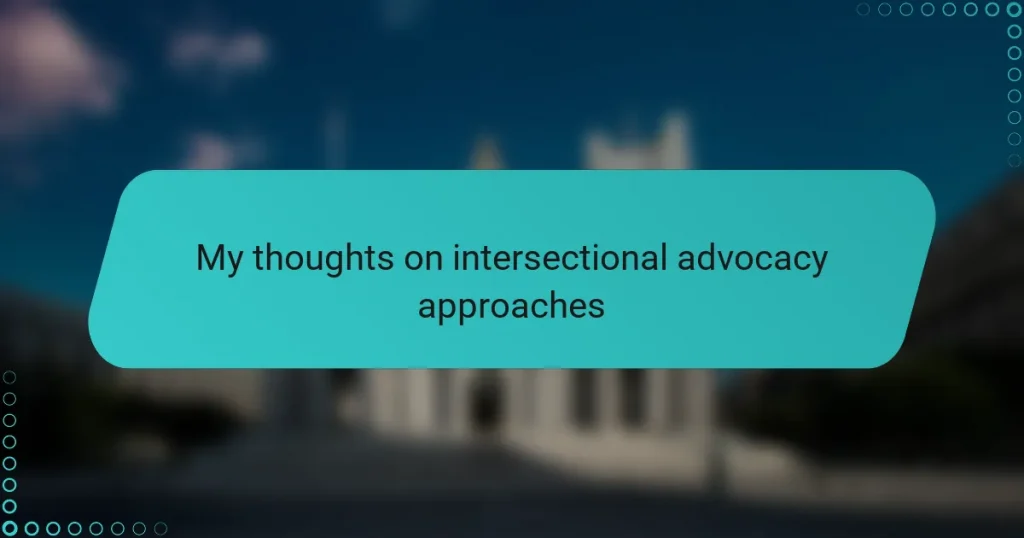Key takeaways
- Intersectional advocacy recognizes the interplay of multiple identities, leading to unique experiences of discrimination that must be considered for effective legal support.
- Core principles of effective legal advocacy include empathy, clarity, and persistence, which are essential for understanding clients and adapting strategies.
- Implementing intersectional approaches can be challenging due to institutional resistance and the emotional labor required, but it ultimately strengthens advocacy efforts.
- Practical strategies for advocates include thorough client interviews, collaboration with diverse professionals, and maintaining flexibility in legal arguments to address complex realities.
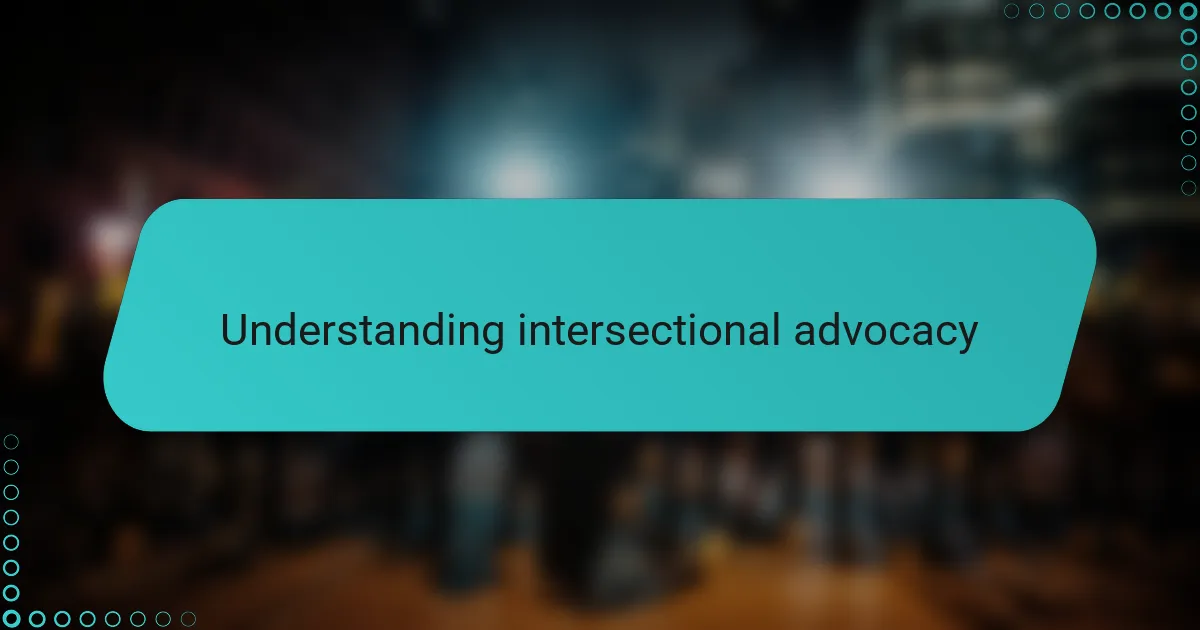
Understanding intersectional advocacy
Intersectional advocacy recognizes that people’s lives are shaped by multiple, overlapping identities—like race, gender, class, and disability—that interact to create unique experiences of discrimination or privilege. I’ve seen firsthand how focusing on just one aspect, say gender, can overlook the added challenges someone faces when other identities come into play. Doesn’t it make sense to approach legal advocacy with a lens that truly reflects people’s complex realities?
When I first started working in legal advocacy, I realized that a one-size-fits-all approach often misses critical nuances. For example, advocating for a woman’s rights without considering her racial or socioeconomic background felt incomplete. It’s almost like trying to solve a puzzle but ignoring some pieces—how can we hope to achieve justice without addressing the full picture?
Understanding intersectional advocacy means being intentional about listening deeply and recognizing that barriers are compounded, not isolated. It’s emotionally challenging but also incredibly rewarding to stand alongside those whose stories don’t fit neatly into a single category. Have you ever paused to consider how your own advocacy might evolve by embracing this layered perspective?

Principles of legal advocacy
Effective legal advocacy rests on core principles like empathy, clarity, and persistence. From my experience, empathy isn’t just a feeling; it’s the foundation for truly understanding the individuals behind the cases. Have you noticed how listening carefully can reveal details that reshape your entire strategy?
Clarity in communication is another cornerstone. When I first presented a complex case without breaking down the jargon, I saw how easily even the most compelling arguments can fall flat. How often do we forget that the law must be accessible to those it serves?
Lastly, persistence isn’t just about pushing forward—it’s about adapting when the path changes. I recall moments when setbacks felt overwhelming, yet staying committed uncovered new angles I hadn’t considered before. Doesn’t resilience often become the quiet hero behind every legal victory?
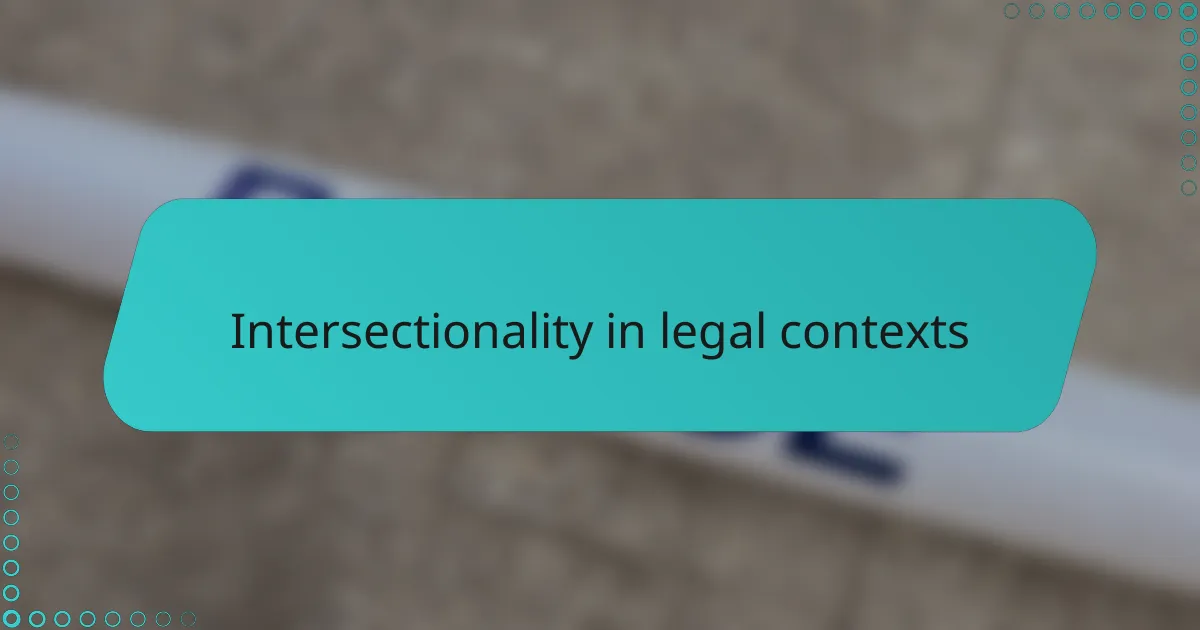
Intersectionality in legal contexts
Intersectionality in legal contexts reveals just how intertwined identities shape a person’s experience with the law. I remember a case where focusing solely on disability discrimination missed the racial bias that compounded the injustice. It made me realize that ignoring any part of someone’s identity can mean overlooking critical legal protections.
Legal systems are often structured in ways that don’t accommodate these overlapping experiences. Have you ever noticed how statutes might protect against gender discrimination but fall silent on racial factors that intensify the harm? This gap signals why intersectional thinking isn’t just theoretical—it’s essential for effective, fair advocacy.
Addressing intersectionality requires more than legal knowledge; it demands humility and a willingness to challenge standard practices. I found it both frustrating and eye-opening when colleagues resisted acknowledging complexities beyond single-issue frameworks. Yet these challenges only reinforced my belief that embracing intersectionality leads to deeper, more just outcomes.
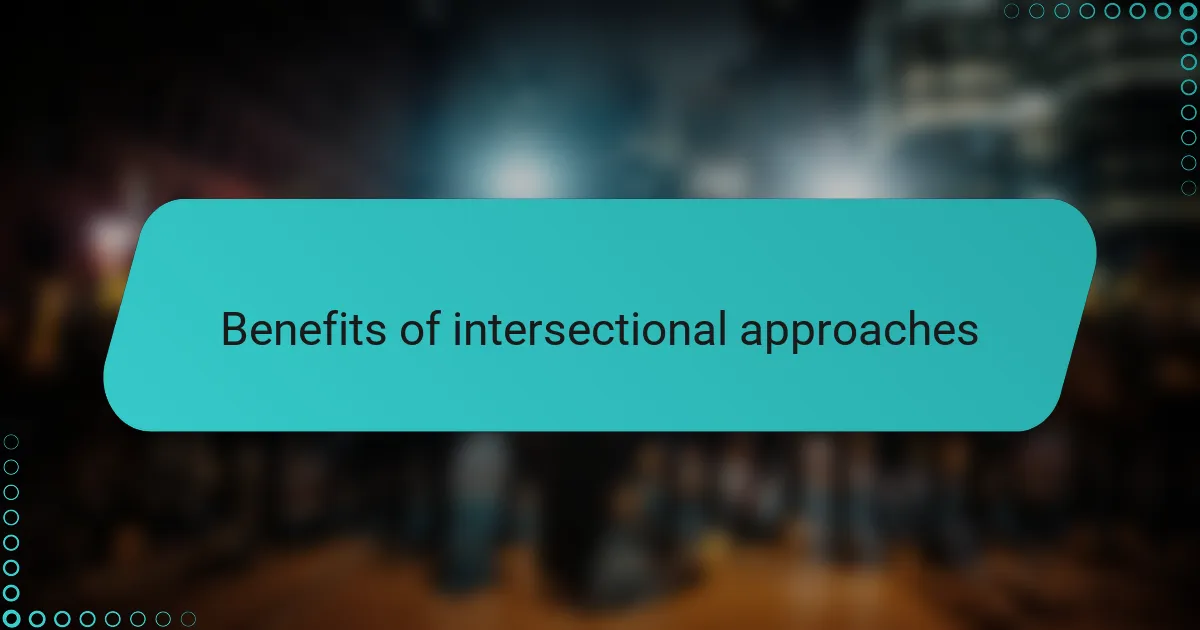
Benefits of intersectional approaches
One benefit I’ve noticed is that intersectional approaches help uncover hidden barriers that a single-issue lens might miss completely. For instance, I once advocated for a client whose case involved both immigration status and disability—addressing only one aspect would have left crucial challenges unresolved. Doesn’t it feel like recognizing all the pieces leads to stronger, more effective legal strategies?
Another advantage is the way intersectional advocacy fosters deeper empathy. When you truly see how different identities overlap and amplify obstacles, it changes how you listen and respond. I’ve found that this nuanced understanding builds trust with clients and empowers them in ways a narrower focus simply can’t match.
Perhaps most importantly, intersectional approaches push the legal field toward greater equity. By challenging rigid categories and highlighting systemic complexities, we open the door for reforms that reflect real-world experiences. Have you reflected on how embracing these layered perspectives can actually transform not just individual cases, but the entire system?

Challenges in implementation
Implementing intersectional advocacy isn’t easy—one challenge I’ve faced is the constant tension between the ideal and the practical. Legal systems tend to operate in silos, making it tough to address multiple, overlapping issues all at once. Have you ever felt something important slipping through the cracks because the law only sees one dimension of a person’s identity?
Another hurdle is the emotional labor involved. I’ve spent hours navigating cases where each layer of identity adds complexity, and it can become overwhelming—not just for advocates, but for clients too. How do we stay resilient when every victory seems to uncover deeper, systemic barriers?
Lastly, resistance within institutions stands out as a major barrier. Early in my career, I encountered pushback from colleagues who preferred sticking to traditional, single-focus frameworks. It made me question whether real change is possible—but that doubt only pushed me harder to prove that intersectional approaches don’t dilute advocacy; they strengthen it. Isn’t that worth the struggle?
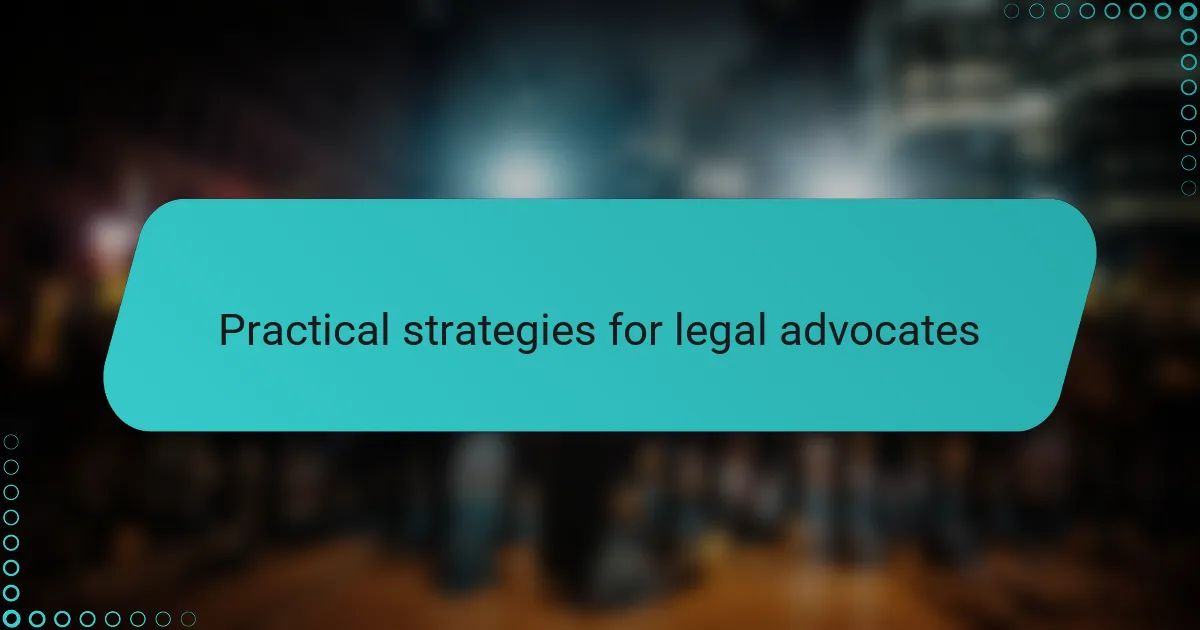
Practical strategies for legal advocates
One practical approach I’ve found invaluable is prioritizing thorough client interviews that go beyond the surface. When I ask open-ended questions about all aspects of a person’s identity and lived experience, I often uncover barriers that wouldn’t have come up otherwise. Have you noticed how taking the time to listen deeply sets the stage for more tailored and effective legal strategies?
Another strategy is building coalitions with advocates from different specialties. Early in my career, I hesitated to reach out to others outside my immediate focus, but partnering with experts in areas like housing or healthcare opened new doors for our clients. Doesn’t collaboration feel like the key to addressing the complex realities intersectional advocacy demands?
Finally, I’ve learned to remain flexible in crafting legal arguments. Sometimes it means shifting from a single-issue claim to a multi-faceted one as more information emerges. It’s challenging but rewarding to adapt on the fly, ensuring no part of a client’s story is left behind. How often do we allow ourselves that agility in the courtroom or negotiation room?

My personal experiences with intersectionality
Early in my career, I recall representing a client whose experience was shaped not just by her immigration status but also by her status as a single mother with a disability. Navigating those overlapping realities made me realize how insufficient it is to advocate through one identity lens. Have you ever faced a situation where understanding just one aspect of a person’s life wasn’t enough to serve them fully?
There was a moment when I felt overwhelmed by the complexity intersectionality brings—balancing multiple layers of discrimination felt like untangling a knot that constantly tightened. Yet, that challenge deepened my commitment; it taught me that embracing complexity isn’t a burden, but a pathway to truly comprehensive advocacy.
I often think about how intersectionality has reshaped my approach to listening. Instead of jumping to conclusions based on a single issue, I’ve learned to hold space for all parts of a client’s identity, even those that seem hidden at first. Isn’t it amazing how much richer our understanding becomes when we slow down and see the full person?
